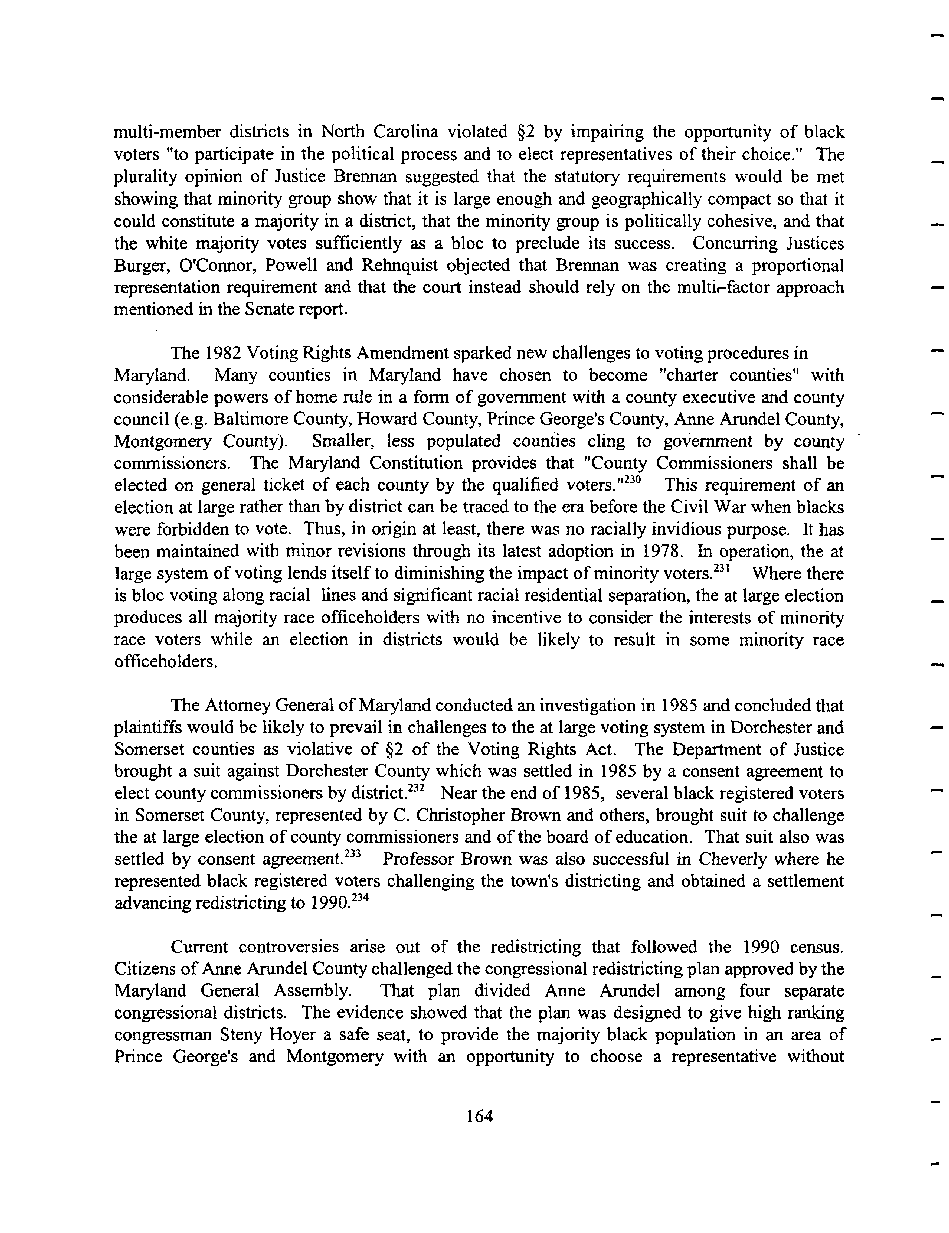|
multi-member districts in North Carolina violated §2 by impairing the opportunity of black
voters "to participate in the political process and to elect representatives of their choice." The
plurality opinion of Justice Brennan suggested that the statutory requirements would be met
showing that minority group show that it is large enough and geographically compact so that it
could constitute a majority in a district, that the minority group is politically cohesive, and that
the white majority votes sufficiently as a bloc to preclude its success. Concurring Justices
Burger, O'Connor, Powell and Rehnquist objected that Brennan was creating a proportional
representation requirement and that the court instead should rely on the multir-factor approach
mentioned in the Senate report.
The 1982 Voting Rights Amendment sparked new challenges to voting procedures in
Maryland. Many counties in Maryland have chosen to become "charter counties" with
considerable powers of home rule in a form of government with a county executive and county
council (e.g. Baltimore County, Howard County, Prince George's County, Anne Arundel County,
Montgomery County). Smaller, less populated counties cling to government by county
commissioners. The Maryland Constitution provides that "County Commissioners shall be
elected on general ticket of each county by the qualified voters."230 This requirement of an
election at large rather than by district can be traced to the era before the Civil War when blacks
were forbidden to vote. Thus, in origin at least, there was no racially invidious purpose. It has
been maintained with minor revisions through its latest adoption in 1978. In operation, the at
large system of voting lends itself to diminishing the impact of minority voters.231 Where there
is bloc voting along racial lines and significant racial residential separation, the at large election
produces all majority race officeholders with no incentive to consider the interests of minority
race voters while an election in districts would be likely to result in some minority race
officeholders.
The Attorney General of Maryland conducted an investigation in 1985 and concluded that
plaintiffs would be likely to prevail in challenges to the at large voting system in Dorchester and
Somerset counties as violative of §2 of the Voting Rights Act. The Department of Justice
brought a suit against Dorchester County which was settled in 1985 by a consent agreement to
elect county commissioners by district.232 Near the end of 1985, several black registered voters
in Somerset County, represented by C. Christopher Brown and others, brought suit to challenge
the at large election of county commissioners and of the board of education. That suit also was
settled by consent agreement.233 Professor Brown was also successful in Cheverly where he
represented black registered voters challenging the town's districting and obtained a settlement
advancing redistricting to 1990.234
Current controversies arise out of the redistricting that followed the 1990 census.
Citizens of Anne Arundel County challenged the congressional redistricting plan approved by the
Maryland General Assembly. That plan divided Anne Arundel among four separate
congressional districts. The evidence showed that the plan was designed to give high ranking
congressman Steny Hoyer a safe seat, to provide the majority black population in an area of
Prince George's and Montgomery with an opportunity to choose a representative without
164
�
|

